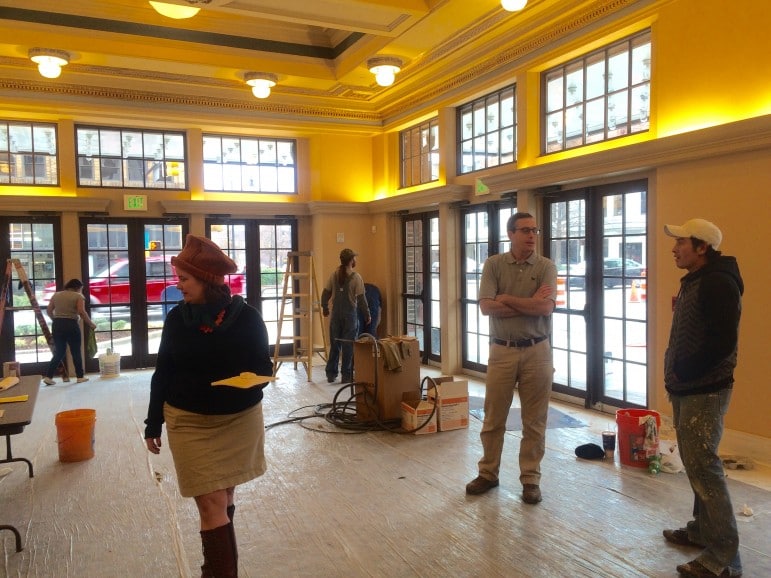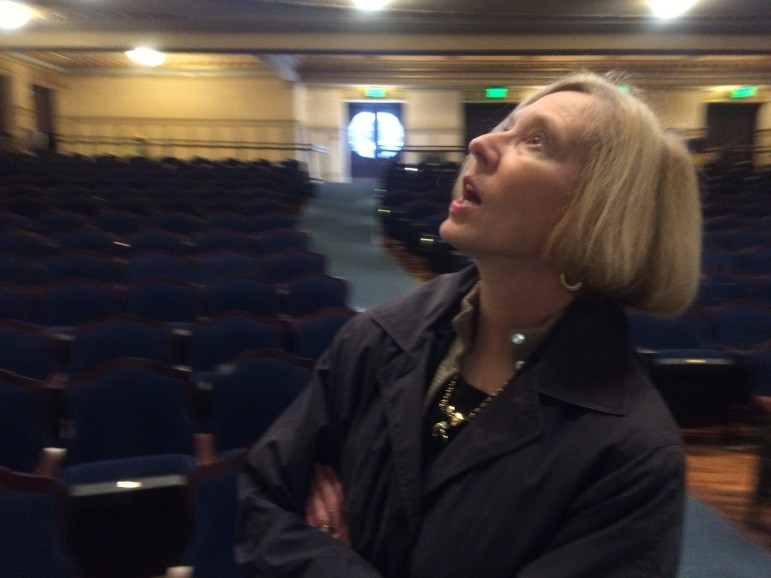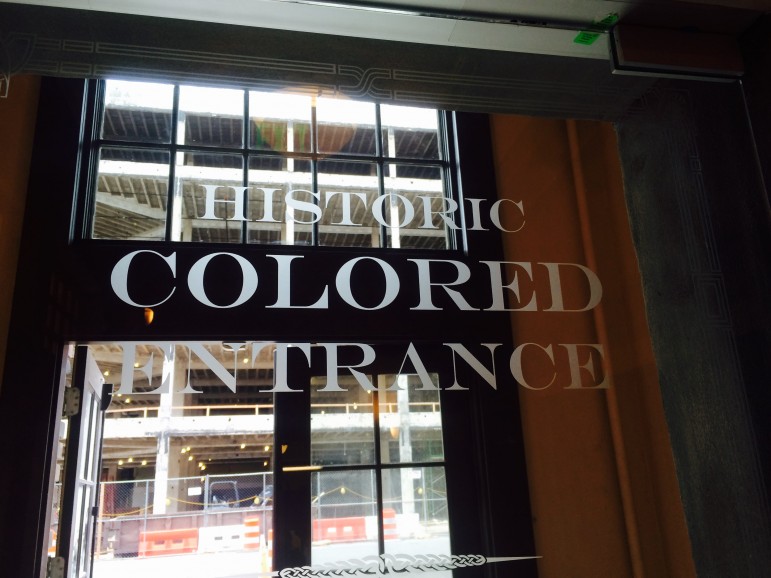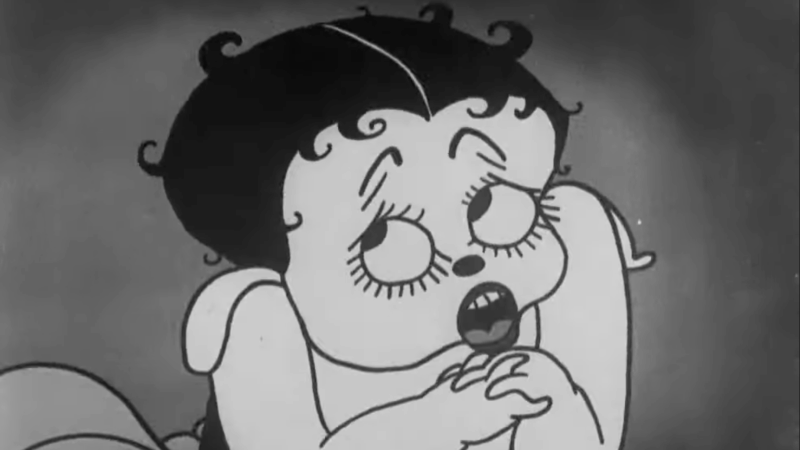A Visit to the Historic Lyric Theatre Before It Reopens This Thursday
An old Birmingham vaudeville theater starts a new life tomorrow. After two years and a more than $11 million renovation, the Lyric Fine Arts Theatre reopens downtown, exactly 102 years after its first performance. In its heyday, the theater hosted acts like The Marx Brothers and Will Rodgers. But decades of neglect left the theater in serious disrepair.
Last Friday, the theater was buzzing with activity, as contractors and volunteers hurried to ready the theater for its big reveal.
“There are people working on our concession area and bar, there are people working on stage, there are people working on the seats, there are poeple hanging lights, theere are people working on the sound system…” Glenny Brock rattles off a laundry list of the day’s activity. She’s outreach coordinator for Birmingham Landmarks, the non-profit that own the Lyric Theatre and the Alabama Theatre across the street. “We are learning where all the light switches are,” Brock adds.
For years, she’s been a cheerleader and champion for the theater’s restoration.
In the lobby, workers glaze the ornate geometric molding with final coats of paint and vacuum up stray dust. “There is something going on in every room to get ready for the opening,” Brock explains.
She previously spent a lot of time in the theater, and when she first saw the lobby it was very different than it is today.
“This part of the building had, for the most part, been abandoned for the last 40 years. The paint was peeling. It had all deteriorated a bit. There was a forklift parked over there,” she says, gesturing to a now pristine corner. “It was also full of garbage. In some ways, what the Lyric lobby had been for the last 10 or 12 years was the most elegant storage unit on earth,” says Brock.
Inside the theater, the once rotted out ceiling is covered in brightly painted gold and light blue flourishes, intricate turn of the century chandeliers and what could be the prettiest air conditioning vent in the state.
Fran Godchaux of REV Birmingham, an economic development group, walks in and is gobsmacked.
“Oh my god look at the murals!” she exclaims. “This is the most phenomenal moment that I can describe in terms of this theater. What it looked like a year ago and what it looks like now….it is the most amazing transformation I have seen.”
Leah Tucker’s right behind her.
“Wow,” says Tucker, almost at a loss for words. She’s the director of the Alabama Jazz Hall of Fame at the Carver Theatre, and she says she’s followed the restoration closely.
How would she describe the Lyric before? “Ha!” she laughs. “It was…it was terrible before. But the after is definitely worth it! It makes me think about the old days. Takes me back in time. It reminds me of that old time Victorian era,” Tucker says.
But for all the oohs and ahhs, there’s still work to be done.
“My eyes are glazed over, my head hurts, my knees are tired, but the show must go on,” says Brant Beene, executive director of Birmingham Landmarks. Exhaustion aside, he can’t wait for opening night. The Lyric launches with three vaudeville shows this week. Beene says it’s a tribute to the theater’s history.
“Before the Alabama was built, the Lyric was the place to be in town. Every Monday night it was filled. If you could get a ticket. That’s where we’re headed now, because all three of our opening nights are sold out. It’s just fun,” Beene says.
In its day, the Lyric was one of the only places in Birmingham where everyone, black or white, could see the same show at the same time for the same ticket price. Still, it was segregated. And that segregation was literally built in stone.
“From 1914 and until the Lyric closed, only white people would have come through these doors on 3rd Avenue,” explains Brock. Gesturing to the back of the lobby, she points to a door on the left. “Previously that was a solid marble wall. So black patrons would have come in on a door on 18th Street, up a set up stairs, down a hallway that runs the length of the auditorium, up another set of stairs to a landing, up four more stairs to the balcony which was, at the time, called, of course, the colored balcony,” says Brock.
Today, the former colored balcony has no seats. It’s a place for tech equipment and lighting. But Brock says she’ll still take visitors up there for tours
“There are plenty of buildings in Birmingham that we know were segregated. But it’s rare that you get to have this vivid encounter with what was a segregated space,” Brock says. “I’m certain it’s one of the reasons we were able to save this theater. By facing this narrative and bringing this narrative to the fore. I tell people…” As she talks, a booming drilling sound erupts from the ground floor
“Yeah that’s gonna keep happening,” Brock laughs. “I keep trying to talk, but a wonderful human is bolting down the chairs in the first row. This is important. He’s almost done,” she says.
Brock has more to say about the colored balcony, but for now we decide to head downstairs and meet the wonderful human who keeps interrupting our interview. His name is Andy Harris.
What number seat is this he’s installing? “Phew. I’d say 850!” exclaims Harris. He sounds like he almost doesn’t believe it himself. After the first row is finished, Harris gets started on the seats in the Lyric’s 12 newly-installed opera boxes.
The seats themselves look inviting, but so new I don’t feel right about sitting on them. Brant Beene however, doesn’t quite share my misgivings.
“We sat in them for the first time yesterday,” he says, smiling. Despite the rapid pace of the last few weeks, Beene is overjoyed to see the Lyric come this far.
Before I go, Glenny Brock says there’s one more thing she wants to show me.
“Where I mentioned before, where there was that marble wall? We now have a door that’s marked ‘Historic Colored Entrance’.” There was a ladder in front of it before; I’d just missed it. Brock says, when the theater opens, every patron will see this reminder of the past, etched elegantly into glass.
Beene says the Lyric’s reopening serves as another sign of Birmingham’s rebirth — a new gathering place for everyone in the community.
“Every time I come in here I can’t help but smile. You look up and you see that huge stage and it just makes me happy,” says Beene. “What a fun ride we’ve been on here.” While that ride may be ending for this major restoration, but it’s just beginning for everyone else.
Top Instagram reels from Goats and Soda in 2025: Plumpy’Nut, aid cuts, soccer grannies
Our most-viewed Instagram videos include reports from a Rhode Island factory that makes special food for malnourished children and from a tournament for soccer-playing "grannies."
‘The Rest of Our Lives’ takes readers on a midlife crisis road trip
America's literary highways may be plenty crowded with middle-aged runaways fleeing lives that increasingly feel like a bad fit. But Ben Markovits adds a moving tale to the collection.
Hunker down with these 13 mysteries and thrillers from 2025
Mysteries and thrillers are enjoyable no matter the season, but there's something extra satisfying about curling up in the winter with a warm drink and an all-engrossing read. Here's what we suggest.
Should the U.S. model its vaccine policy on Denmark’s? Experts say we’re nothing alike
The Trump administration wants to revamp U.S. childhood vaccination recommendations to align with some other peer nations, including one tiny country in northern Europe.
Marijuana rescheduling would bring some immediate changes, but others will take time
President Trump set the process in motion to ease federal restrictions on marijuana. But his order doesn't automatically revoke laws targeting marijuana, which remains illegal to transport over state lines.
The cultural works becoming public domain in 2026, from Betty Boop to Nancy Drew
The original Betty Boop, the first four Nancy Drew books and Greta Garbo's first talkie are among the many works from 1930 that will be free to use, share and remake starting on Jan. 1.












